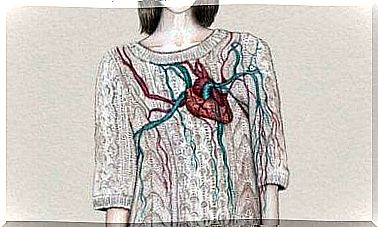How To Help A Person Who Is Having A Panic Attack

You have probably heard the term panic attack before or know of a colleague, friend or family member who suffers from these seizures. However, what happens to those who witness such crises? What can we do to help when we see someone who is suffering from palpitations, spasms or tremors, sweating, breathlessness, tightness in the abdomen or chest, nausea, dizziness or confusion? We present some simple steps to know how to help someone who is suffering from a panic attack.
1) If you did not know that the person suffers from panic attacks from time to time, if this is the first time or if they also suffer from problems such as asthma or diabetes, call an ambulance.
2) This scenario is usually distressing for those who want to be useful. Breathe deeply and try to stay calm, both for yourself and to be able to instill it in the other person. Maintain a calm, warm and firm tone of voice, accompanied by harmonious body language without sudden movements.
3) Avoid giving orders or asking the person if they have any medications they usually take during these crises.
4) Do not question the irrationality of fear with comments such as “it’s just your imagination” because the person experiences it as a real, threatening and uncontrollable experience, and feeling misunderstood would distress them more. If she insists she is dying, tell her the crisis will last for a while but then it will pass. Although you want to take her arm to point out that you are there, best not to touch her.
5) The person could be immobilized or flee; it might even lock itself into a room. Maybe he’ll sit on the ground and won’t want to move. If so, after a few moments tell her to hold on to something and get up.
6) Encourage her to continue by telling her that she is doing very well with every little progress. Ask her simple questions such as what color is the room she is in and what the tiles are like on the walls in order to shift her focus from fear to other things.
7) Listening to her, letting her talk and inviting her to relax is important to ensure that she regains control over herself.
8) Accompany her in focusing on the breathing, inhaling and exhaling slowly as you count the breaths aloud. First for two seconds at a time, then three to five. This will slow the heart rate down.
9) Invite her to cool off and moisten the nape of her neck, neck, and face for some relief, particularly if she is sweating a lot.
10) Accompany her all the time until the panic attack passes. If you do not have any tranquilizers with you and you notice that you cannot relax after a maximum of 15 minutes, call a doctor. Often taking her to the hospital can distress her even more, so it’s best to ask her if she wants to go.
Several studies have shown the effectiveness of combining drugs with therapy aimed at changing attitudes. The patient learns techniques to cope with panic attacks that allow him to identify automatic thoughts and false alarms, and to recognize that although they are unpleasant they do not represent a real danger. This system is very useful when you need to help because it comes very close to the deeper answer to the question “how to help someone who is having a panic attack”?









